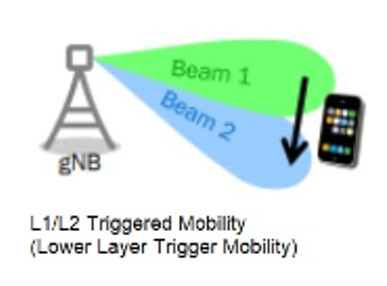5GLTM | Lower Layer Triggered Mobility
In 5G networks, during the mobility a small interruption time for UE is extremely crucial for ultra-reliable low latency communication (URLLC) applications as well eMBB traffic. Similar to legacy cellular technology, 5G allows handover Mobility decisions based on the measurement report of neighboring cells received from the UE. The performance of the baseline handover mechanism highly depends on the time-line latency of measurement report transmission and/or HO command reception.
Following up from 3GPP Release 17 discussion, one of the objectives of 3GPP Release 18 mobility enhancements work item identified to facilitate any new algorithm for lower layer cell change based on L1 measurements where the handover is triggered by Medium Access Control (MAC) using lower layer signaling. This new solution for 5G Advanced network will be supported for FR1 and FR2 and is referred as L1/L2 inter-cell mobility. Lower Layer Triggered Mobility goal to reduce interruption during handover (HO) execution compared to baseline HO.
Key Pointers
- LTM also know as L1/L2 Mobility
- It is a 3GPP Release 18/ 5G Advance Feature
- In LTM handover is executed based on Layer 1 (L1) measurements so called Lower Layer Triggered Mobility (LTM) .
- It has been shown that lower layer triggered mobility procedure outperforms the existing handover mechanisms with respect to radio communication reliability at the expense of higher number of handovers and ping-pongs.
- To tackle these drawbacks, additional filtering for the L1 measurements used in handover decision is introduced to reduce the fluctuations caused by fast fading and measurement errors.
- Lower layer mobility procedure is enhanced with dynamic switching mechanism enabling the UE to change cells without being reconfigured by the network.
- Such techniques is beneficial in reducing the number of ping-pongs and signaling overhead at the expense of an increase in the delay to react to rapid signal degradation and resource reservation overhead, respectively

Continue reading: ![]()